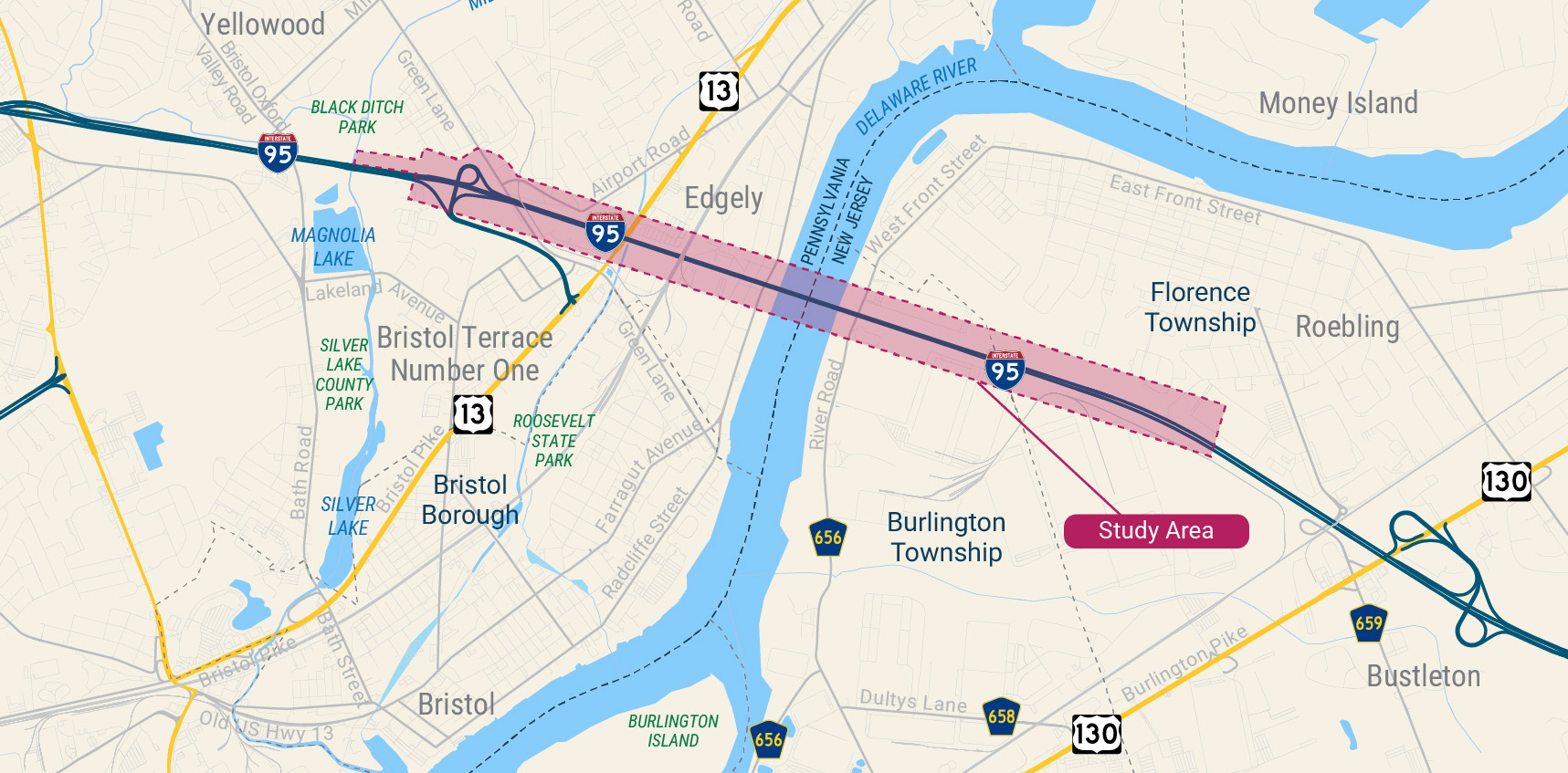Delaware River Bridge Project
PA Turnpike/I-95 Interchange Project - Stage 3
The Pennsylvania Turnpike Commission (PA Turnpike) and the New Jersey Turnpike Authority (NJTA), with oversight from the Federal Highway Administration (FHWA), are currently evaluating rehabilitation and replacement options for the existing Delaware River Bridge (DRB).
Looking Back
The previously selected alternative from the 2003 Record of Decision (ROD) was to build a new bridge to carry eastbound (i.e. I-95 NB to NJ) traffic and rehabilitate the existing bridge to carry westbound (i.e. I-95 SB to PA) traffic.
In 2017, a fracture of one of the existing bridge approach trusses required a full closure of the bridge for more than six weeks while the bridge was fully inspected and repaired. The closure resulted in extensive detours for the approximately 68,900 daily vehicles traveling this section of I-95. As a result of the closure, the tolling agencies have programmed funding for the DRB project to complete an Alternatives Analysis, Supplemental Environmental Impact Statement (SEIS) under the National Environmental Policy Act (NEPA), and Preliminary Engineering.
Environmental Review
A SEIS is required if changes to the proposed action would result in significant environmental impacts not evaluated in the original EIS; or new information or circumstances relevant to environmental concerns, bearing on the proposed action or its impacts, would result in significant environmental impacts not previously evaluated. As part of the SEIS process, a full range of alternatives is being considered both north and south of the existing bridge. Additionally, the Team must consider whether the existing bridge can still be rehabilitated, which was part of the 2003 selected alternative.
The SEIS follows the same process and format as that of an Environmental Impact Statement (EIS). While it builds off the original 2003 FEIS and ROD, the SEIS for the DRB project will be prepared based on updated information and analyses, public involvement, and agency coordination. In other words, the SEIS provides the opportunity for a ‘fresh look’ at the project. The FHWA will issue a Final SEIS and ROD that will document the rationale for the selected alternative.
Moving Forward
The Team is currently conducting an Alternatives Analysis which evaluates rehabilitation and replacement alternatives and bridge types for the DRB project. An Alternatives Analysis Report will be prepared to document the analysis and identify proposed alternatives to be advanced for detailed study in the SEIS. The proposed alternatives will be made available for public and agency consideration and feedback prior to finalizing.
When the Alternatives Analysis is complete and the determination for rehabilitation or replacement is made, preliminary design activities will continue into 2027. The SEIS will concurrently evaluate changes since 2003 for the range of alternatives, assess impacts, and obtain input from federal, state, and local regulatory agencies and the public.
Once preliminary engineering and environmental clearance are complete, the next steps are to complete final design, permitting, and construction.

Scroll Down for More Info
Project Study Area Map
FAQs
More Project Resources

